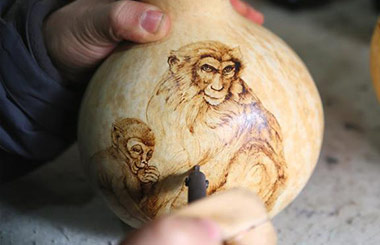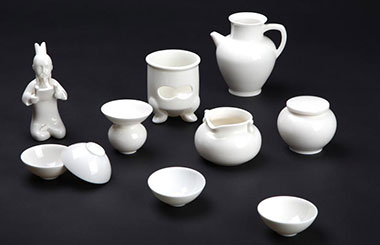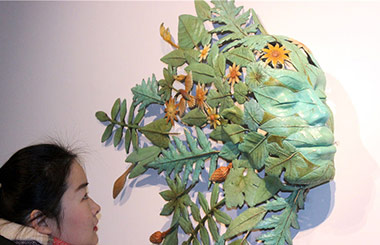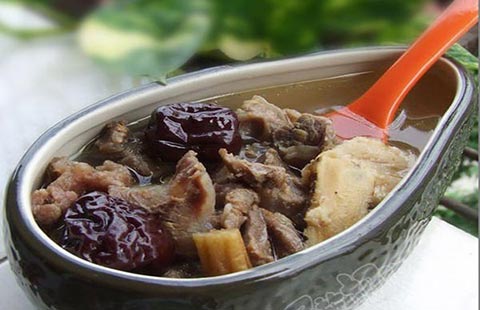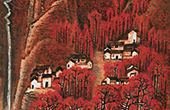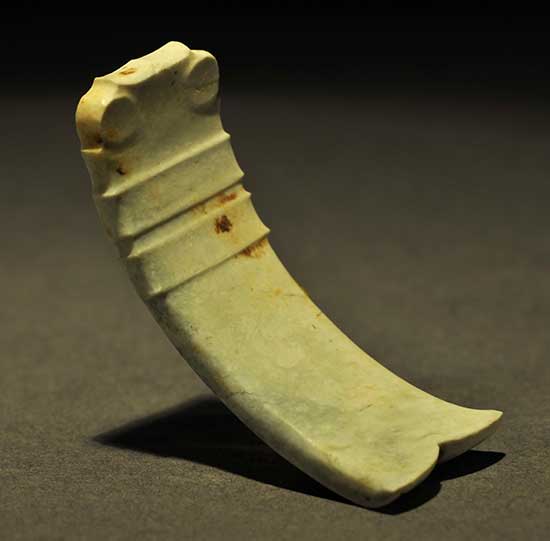 |
|
Jadeware, excavated in November from Tianmen county, Hubei province, include (clockwise from top left) a tiger, double-head figurine, two birds, human head and curved cicada.[Photo provided by Shijiahe Relics Archaeological Team of Hubei Provincial Archaeological Research Institution]
|
Close look
Before the November discovery of about 240 fine jade objects, a total of 406 such gems had been unearthed from the sites of Shijiahe. The objects include human figurines, human head, cicada, long (Chinese dragon)-shaped ornaments, bird-shaped ornaments, bi (disk), tube-shaped ornaments, rings, hairpins and tiger head.
Analysis of the Shijiahe jades shows that most are made from nephrite, a silicate mineral that is greenish white in color with a glasslike shiny surface and a hardness of about 5.5 on the Mohs hardness scale of 10. Other Shijiahe jades are carved from chalcedonite, crystal, steatite, quartz or turquoise.
Some of the jades might have been badges or accessories sewn on clothing, while others drilled with holes could have served as jewelry. Similar jade figures had also been unearthed in the remains of the Shang and Zhou dynasties. All these figures share some significant similarities such as the shape of design and relief lines on the surface.



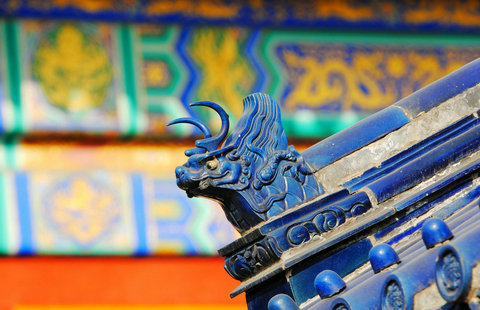



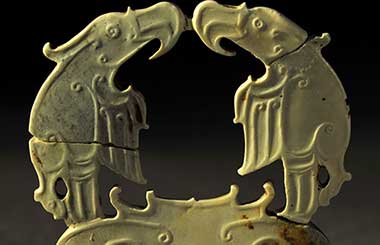














 Raymond Zhou:
Raymond Zhou: Pauline D Loh:
Pauline D Loh: Hot Pot
Hot Pot Eco China
Eco China China Dream
China Dream China Face
China Face

